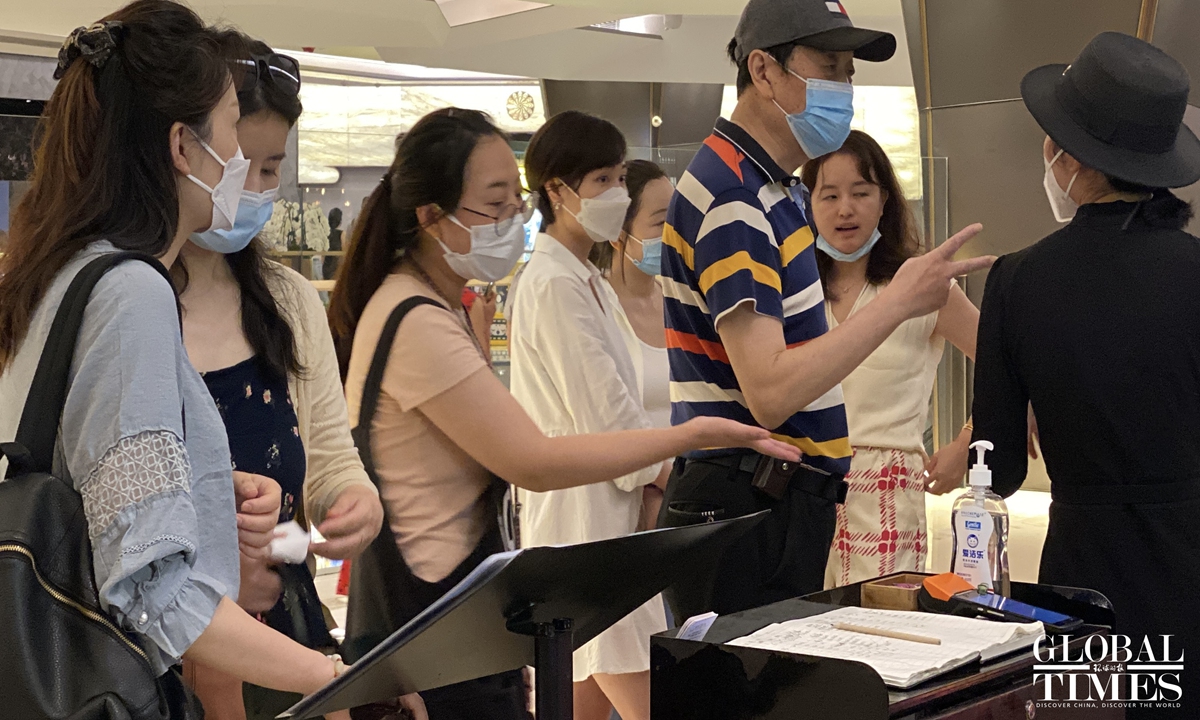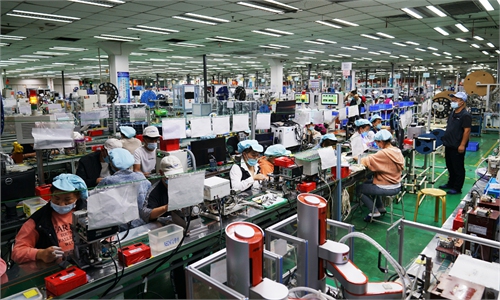
Customers flock to restaurants to enjoy meals at a shopping mall in Xuhui district, downtown Shanghai, on June 29. Photo: Chen Xia/GT
Activities in the services sector contracted further in November as anti-COVID restrictive measures in multiple provinces and cities dampened production and demand, a private survey showed on Monday.
The Caixin services purchasing managers’ index (PMI) came in at 46.7 in November, down 1.7 percentage points from October, remaining in contraction territory for three consecutive months. It marked the largest decline since the peak of the last major virus resurgence. The 50-point mark separates growth from contraction.
Driven by rising costs of raw materials, transportation and labor, the costs of service sector are still increasing, and the cost pressure continues to be transmitted to the sales terminal.
Employment in the services sector improved briefly in October and contracted again in November, with the employment index falling to the lowest level since November 2005, the survey revealed.
The decline in market demand also heightened pressure on employment. In addition, the backlog of business volume index also rose to the highest since June.
The combination of the adverse factors has impacted market confidence. In November, business expectations index in the service industry fell to the lowest level in eight months and continued to be lower than the long-term average.
Surveyed companies believe that output will pick up as the epidemic subsides and operations return to normal. However, the impact of the epidemic and relevant prevention measures on production and demand is still uncertain, creating anxiety among survey respondents.
The services trend surveyed by Caixin went in line with the official data released by the National Bureau of Statistics on Wednesday which showed that the PMI for China’s non-manufacturing sector registered 46.7 in November, down from 48.7 in October.
Unlike the downward trend represented by official data, the Caixin manufacturing PMI rose slightly to 49.4 in November from 49.2 the previous month, beating expectations.
“Since October, the pandemic has spread in many provinces and cities, balancing virus prevention and control with economic development has once again become a core issue. Days ago, the central government made important policy adjustment to optimize prevention and control work, and how to implement them has become the top priority,” Wang Zhe, a senior economist at Caixin Insight Group, said.
“The market is in urgent need of new measures to promote employment and stabilize market demand. The country should coordinate fiscal and monetary policies to expand domestic demand and boost incomes of the poorer parts of the population,” Wang added.
At least a dozen cities across China further adjusted and optimized epidemic control measures over the weekend, including scrapping the requirement for frequent mass nucleic acid tests and mandatory COVID-19 test results for taking public transportation system.
China’s economy achieved a V-shaped recovery in the third quarter, up by 3.9 percent year-on-year, according to data from the National Bureau of Statistics. In the first three quarters, China’s GDP grew by 3 percent year-on-year to reach a total of 87 trillion yuan ($12.01 trillion).
Global Times


